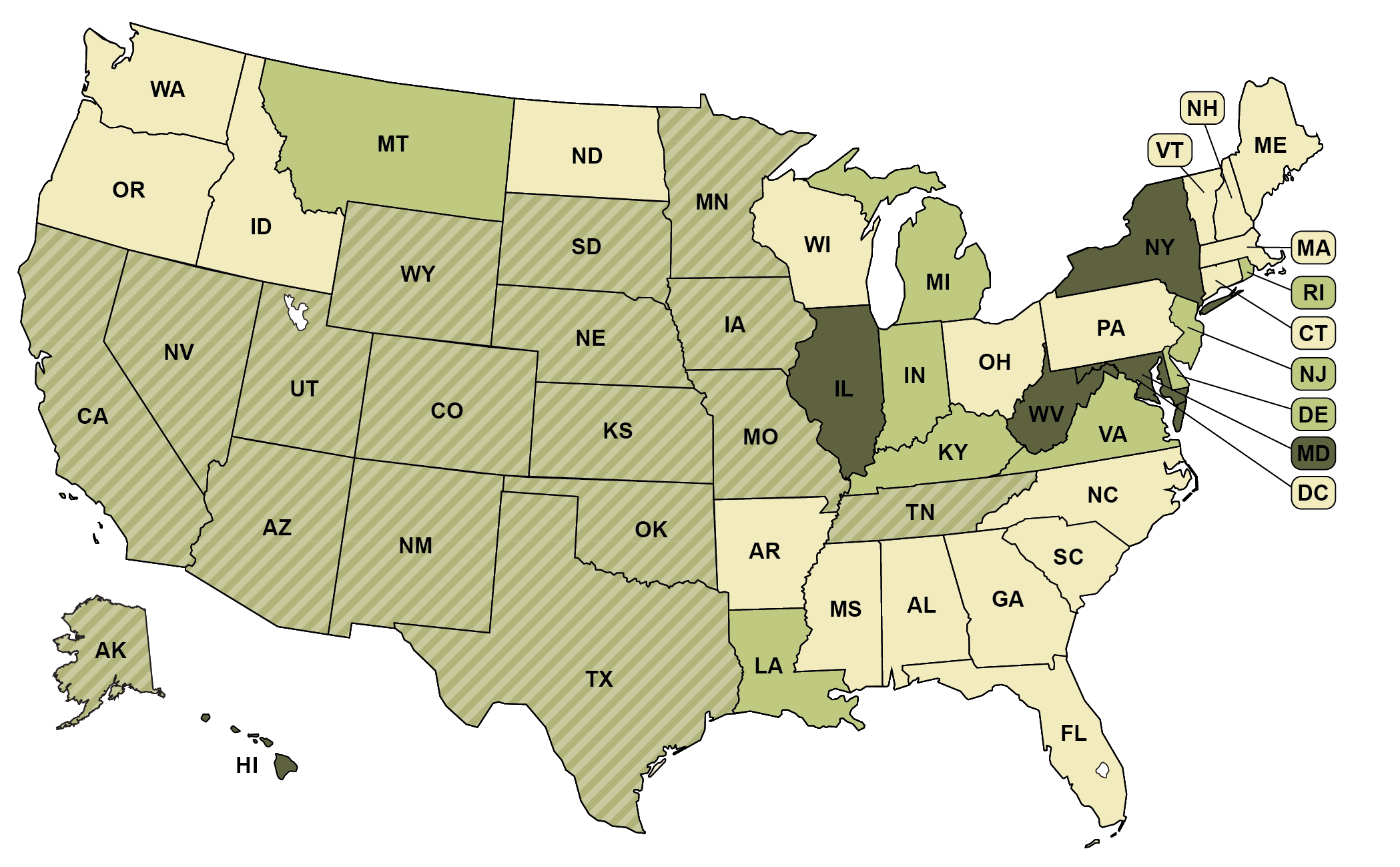A common barrier for voters casting their ballots in-person or returning absentee ballots is getting time away from their jobs. There is no federal law that requires voters be provided time off to cast their ballot, so that policy choice is left up to the states. Policymakers have taken two approaches to solve this issue: making Election Day a public holiday or requiring employers to provide paid time off for voting.
-
State has Election Day as a public holiday and requires employers to provide paid time off for voting
(5 states)
-
State has Election Day as a public holiday but does not require employers to provide paid time off for voting
(9 states)
-
State requires employers to provide paid time off for voting but does not have Election Day as a public holiday
(17 states)
-
State does not have Election Day as a public holiday and does not require employers to provide paid time off for voting
(19 states + D.C.)
Recommended citation: Movement Advancement Project. "Election Day Holidays and Paid Time Off to Vote." https://www.mapresearch.org/democracy-maps/election_day_holiday_paid_time_off_to_vote. Accessed [day of access]
Breakdown by Population
*Note: These percentages reflect the voting-eligible population, as reported by the United States Election Project.
13 % of population lives in states that have Election Day as a public holiday and require employers to provide paid time off for voting
14 % of population lives in states that have Election Day as a public holiday but do not require employers to provide paid time off for voting
36 % of population lives in states that require employers to provide paid time off for voting but do not have Election Day as a public holiday
37 % of population lives in states that do not have Election Day as a public holiday and do not require employers to provide paid time off for voting


